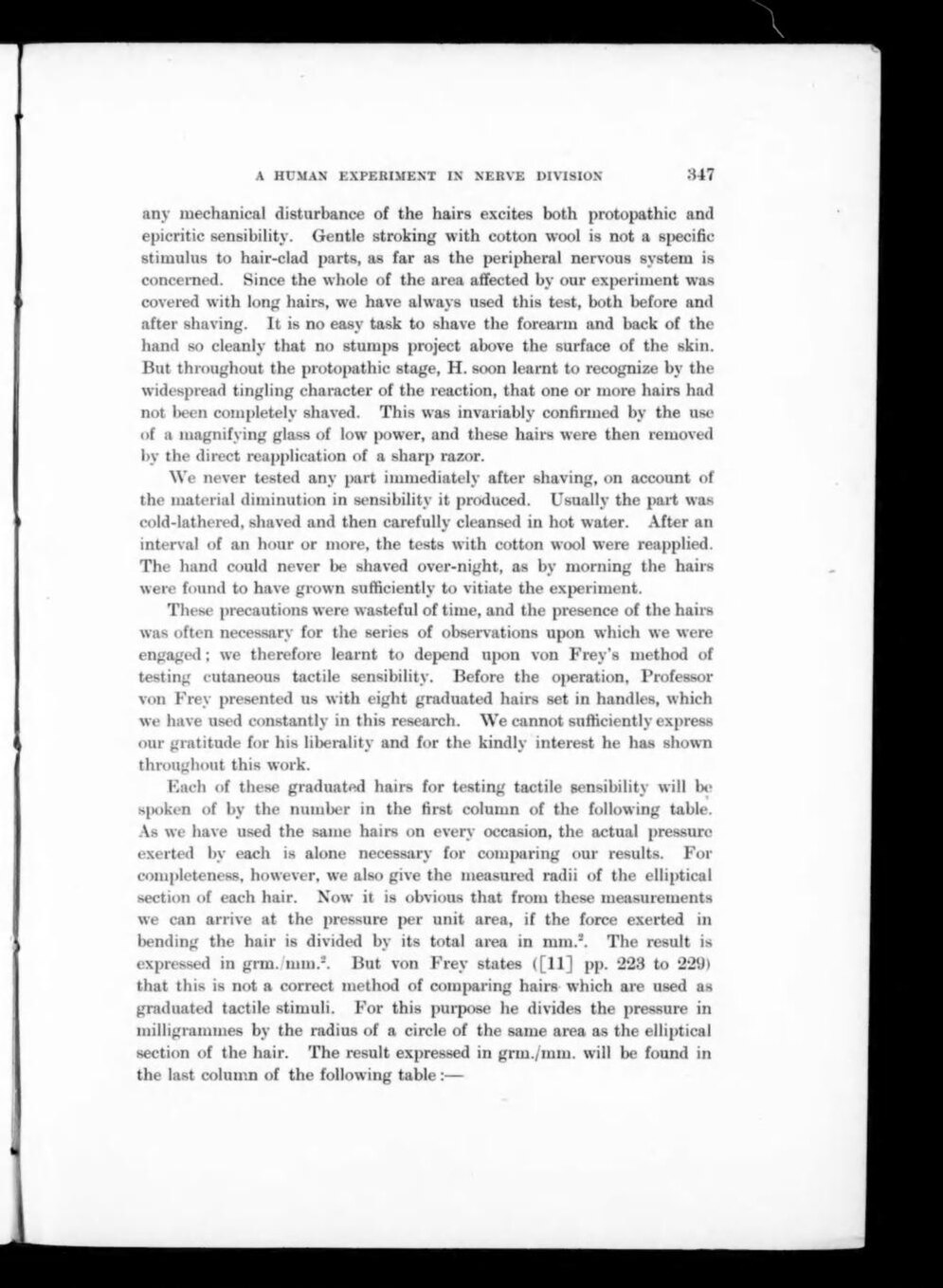any mechanical disturbance of the hairs excites both protopathic and epicritic sensibility. Gentle stroking with cotton wool is not a specific stimulus to hair-clad parts, as far as the peripheral nervous system is concerned. Since the whole of the area affected by our experiment was covered with long hairs, we have always used this test, both before and after shaving. It is no easy task to shave the forearm and back of the hand so cleanly that no stumps project above the surface of the skin. But throughout the protopathic stage, H. soon learnt to recognize by the widespread tingling character of the reaction, that one or more-hairs had not been completely shaved. This was invariably confirmed by the use of a magnifying glass of low power, and these hairs were then removed by the direct reapplication of a sharp razor.
We never tested any part immediately after shaving, on account of the material diminution in sensibility it produced. Usually the part was cold-lathered, shaved and then carefully cleansed in hot water. After an interval of an hour or more, the tests with cotton wool were reapplied. The hand could never be shaved over-night, as by morning the hairs were found to have grown sufficiently to vitiate the experiment.
These precautions were wasteful of time, and the presence of the hairs was often necessary for the series of observations upon which we were engaged; we therefore learnt to depend upon von Frey's method of testing cutaneous tactile sensibility. Before the operation, Professor von Frey presented us with eight graduated hairs set in handles, which we have used constantly in this research. We cannot sufficiently express our gratitude for his liberality and for the kindly interest he has shown throughout this work.
Each of these graduated hairs for testing tactile sensibility will be spoken of by the number in the first column of the following table. As we have used the same hairs on every occasion, the actual pressure exerted by each is alone necessary for comparing our results. For completeness, however, we also give the measured radii of the elliptical section of each hair. Now it is obvious that from these measurements we can arrive at the pressure per unit area, if the force exerted in bending the hair is divided by its total area in mm.². The result is expressed in grm./mm.². But von Frey states ([11] pp. 223 to 229) that this is not a correct method of comparing hairs which are used as graduated tactile stimuli. For this purpose he divides the pressure in milligrammes by the radius of a circle of the same area as the elliptical section of the hair. The result expressed in grm./mm. will be found in the last column of the following table:—
